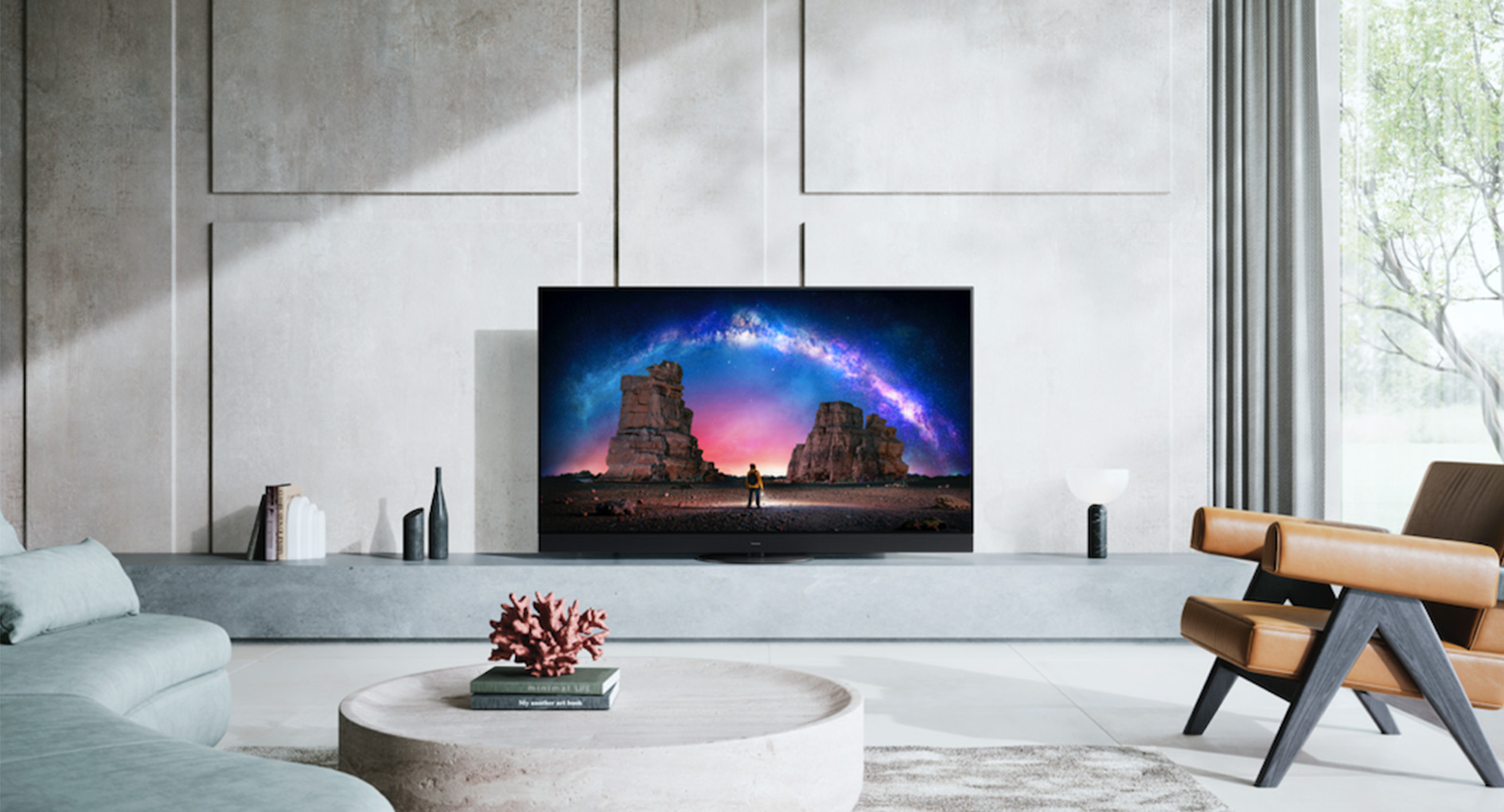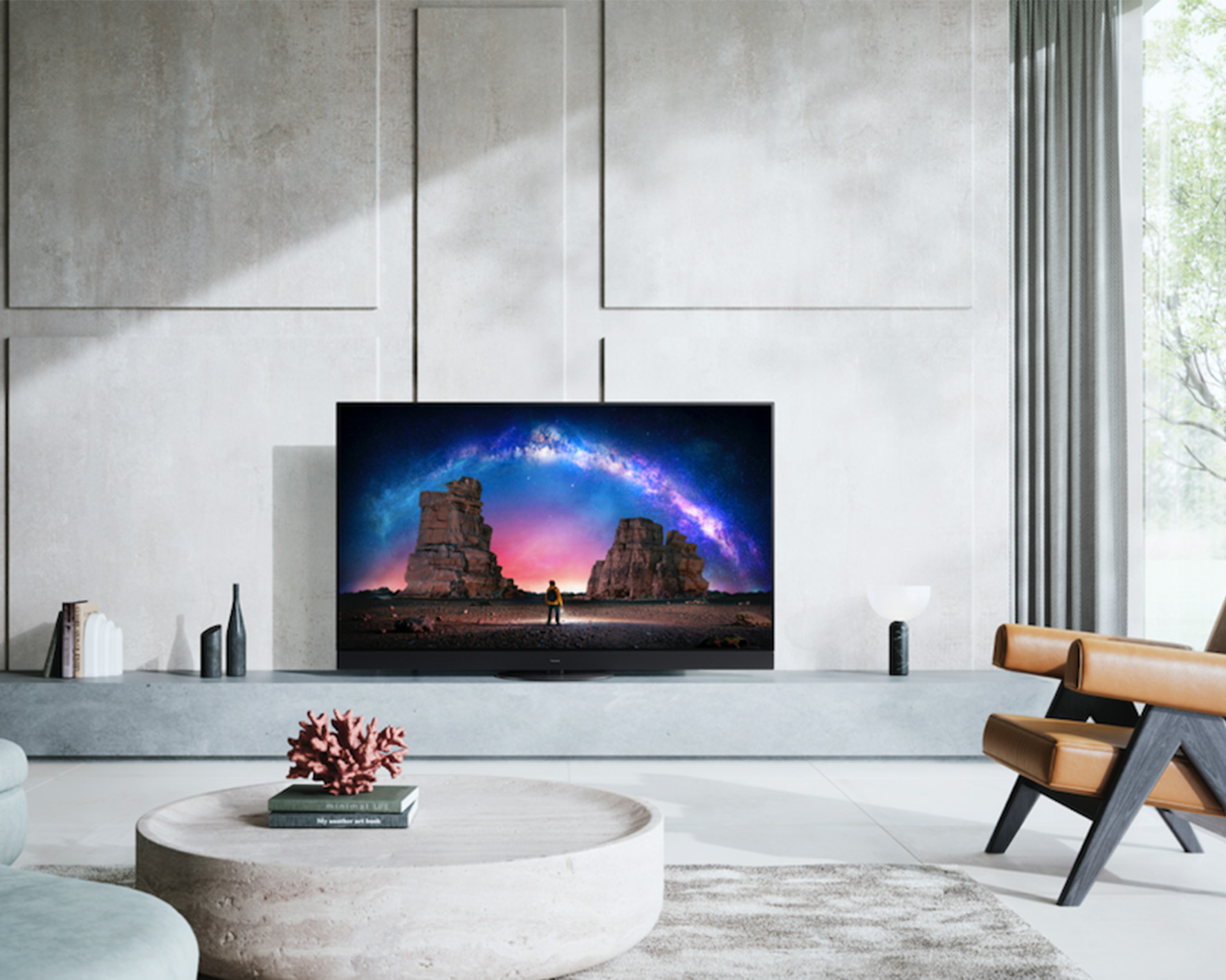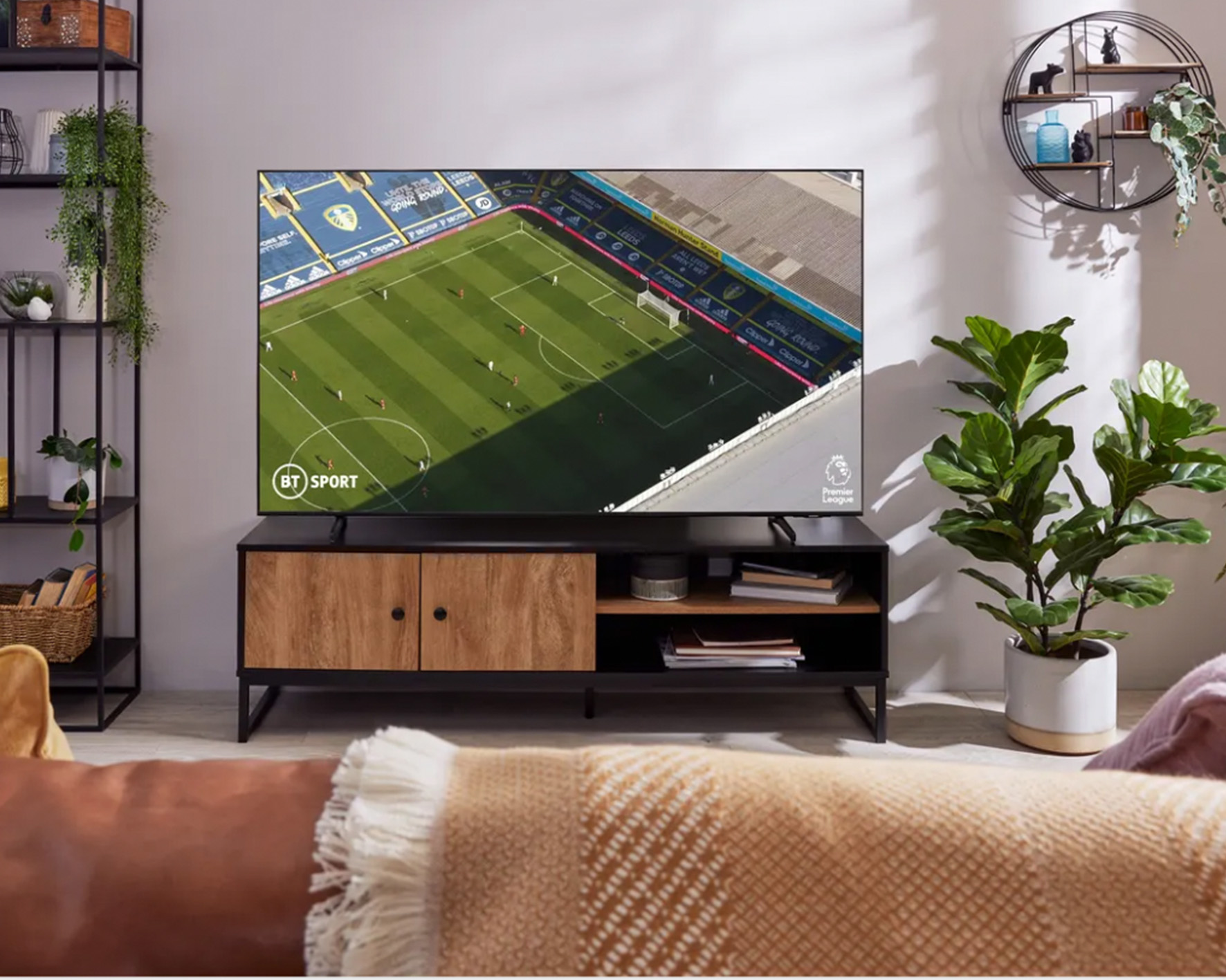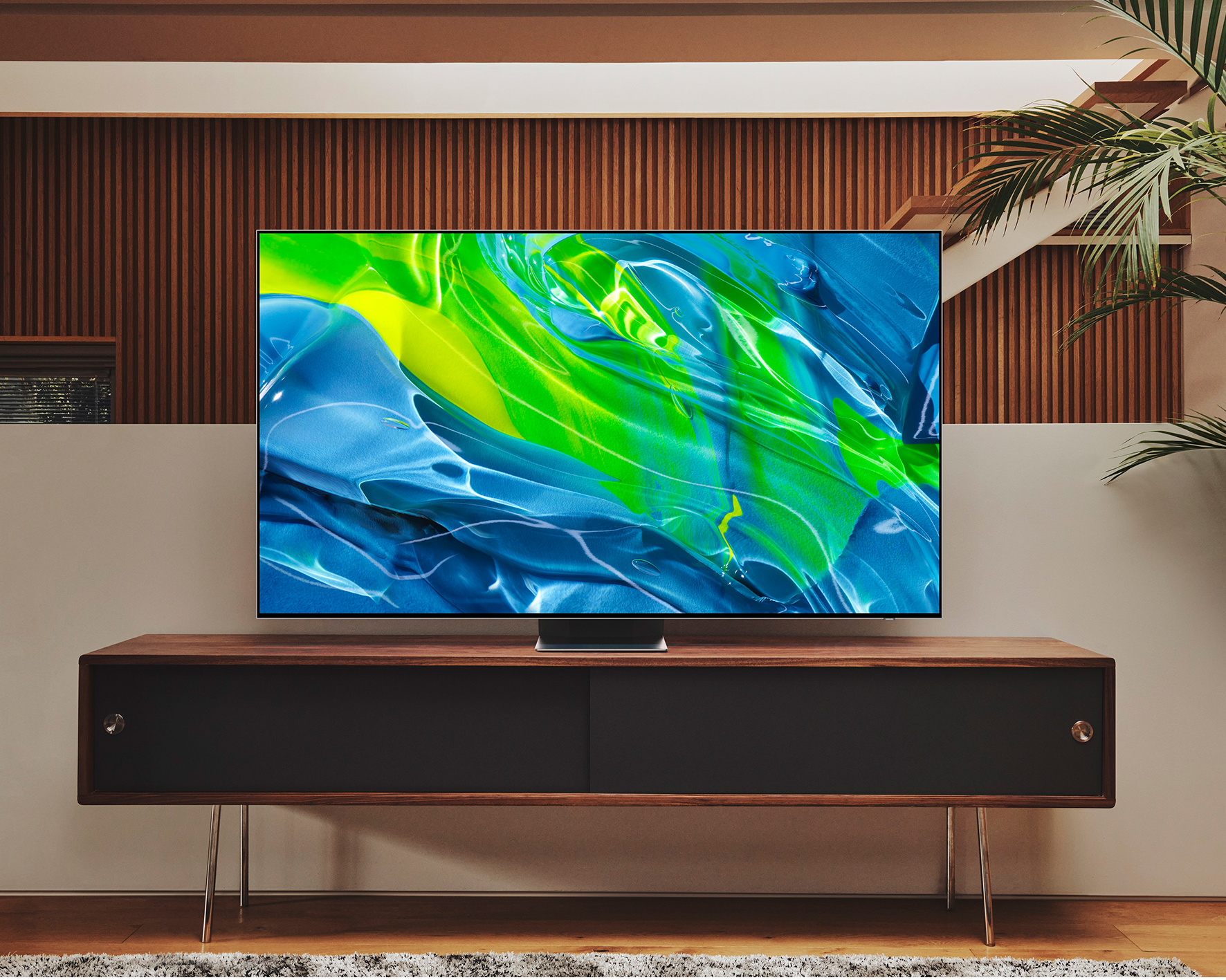QLED vs OLED – what's the difference? Experts explain how to choose the right TV for you
Looking for a new TV and not sure whether to choose QLED vs OLED? Here's all you need to know about these top of the range TV technologies

If you're looking to buy a new TV and need to know what the difference is between QLED vs OLED, we're here to help. OLED and QLED are the best premium technologies gracing the market, so you're going to have to pick a side. But when you're buying a TV online and don't have the luxury of experiencing the screen quality for yourself, we realize it can be tricky to know whether to join team OLED or team QLED. That's why we've outlined the reasons to invest in each of these TV technologies here.
We've also included our edit of the best OLED and QLED TVs for 2022. It's important to remember that while OLED and QLED have their pros and cons, which technology you go for from the best TV brands depends on a number of factors, including what you plan to watch, your budget and how large your room is.
QLED vs OLED – what's the difference?

Reasons to buy an OLED TV
OLED is a light-emissive technology, and unlike QLED, it has no backlight. OLED stands for Organic Light-Emitting Diode, and each pixel in the screen has its own light source, which is why viewers often praise it for having excellent contrast, black levels, and motion reproduction. OLED is an attractive buy for a number of reasons:
1. Colour contrast: As each pixel has its own light source, a bright white or a colored pixel can appear next to one that is black, and they won’t affect the other. ‘This gives truly exceptional color contrast, sharp detail, and true blacks, which makes for a stunning viewing experience,' says Katrina Mills, TV & AV buyer at John Lewis & Partners.
2. Deeper blacks: No backlight ultimately provides deeper blacks that aren't affected by a light behind the screen. It also supports HDR for a wide color and brightness range.
3. Cinematic quality: Deeper blacks create a display that is excellent for watching movies. ‘OLED has that lovely filmic quality you used to get from plasma TVs, really good blacks and depth of field, but now with all the advantages of 4K and 8K resolution,’ says Owen Maddock of Cinemaworks. ‘I think it’s ideal for watching films and box sets.’
4. Smooth on-screen motion: OLED pixels' response time is much faster than the LCD pixels in a QLED TV, which means much smoother and sharper images for sports and movie action scenes. This makes things easier on the eye - particularly when there is fast action on screen.
The Livingetc newsletters are your inside source for what’s shaping interiors now - and what’s next. Discover trend forecasts, smart style ideas, and curated shopping inspiration that brings design to life. Subscribe today and stay ahead of the curve.
5. Viewing range: OLED has impressively wide viewing angles. 'For the family member who usually gets the seat in the house with the worst view, this is a benefit as you can see a good picture even if viewing from the side,' says Katrina.
6. Design matters: With no backlight bulking up the design, OLED TVs are some of the desirably slimmest TVs around.
7. Consider your size: It's worth noting, however, that you can only get OLED in larger TV sizes from 48" and above. In comparison, you can find QLED in 32" size screens and above.
The best OLED TVs


Reasons to buy a QLED TV
While OLED has its merits, there are also a number of reasons why a QLED TV may be your preferred choice of screen. While OLED is a new type of technology in itself, QLED is an upgrade of the LCD technology that we have enjoyed for years.
Many of the big-name TV manufacturers, such as Philips, Sony, Panasonic, and LG, all support OLED technology. Meanwhile, QLED is championed by Samsung, with a few other brands, such as Hisense and Vizio, also offering QLED screens.
QLED may be just the ticket for your home for a number of reasons:
1. True-to-life color: QLED stands for Quantum-dot Light-Emitting Diode. Unlike OLED, QLED technology isn’t self-emissive, so it needs a backlight, just like existing LED technology. But what makes QLED different from your standard LED TV is that it has an edge-lit LCD with a quantum dot color filter layer on the screen. This helps to enhance the color contrast and create a picture that feels true to life.
2. Good for watching in bright rooms: Without a backlight, OLED doesn't have the capacity to reach the same peak brightness as QLED. QLED is designed for use in all lighting conditions to give you minimum reflection. 'QLED has a higher light output, so if you’re watching in a well-lit room such as an open-plan kitchen or conservatory, it's worth considering over OLED,' says Owen Maddock.
3. Great for smaller rooms: OLED TVs start at 48" and above, whereas you can find QLED at 32" and above. It's recommended that you divide the viewing distance of your TV by 2.5, which will give you the best size TV for you.
4. Price: OLED is generally more expensive than QLED, although the gap is getting smaller by the day. If you don’t want to blow the budget on premium prices and are looking for a small screen, QLED can be a great option.
5. No risk of burn-in: Unlike when OLED panels first appeared, there is no risk of burn-in with OLED TVs, which is when a mark is left on the screen over time. This isn't so much of an issue with OLED panels, however, as many now come with anti-burn technologies.
6. Look out for the QD-OLED: This is the latest technology that mixes the best of OLED with QLED - with a blue OLED panel and quantum dot filter. This hybrid creates an even more impressive color and brightness with deeper blacks.
The best QLED TVs

What should I look for when buying a new TV?
Picture resolution, smart functionality, and future-proofing your TV are all important things to think about when buying a new screen, advises Katrina Mills, TV & AV buyer at John Lewis & Partners. 'I've seen an increase in demand for more premium technologies and larger screen sizes. When opting for a new TV, I suggest considering:
1. The picture resolution. This is the number of pixels in a screen; the higher the density of pixels, the higher the resolution. For any TV larger than 43", we recommend 4K resolution for precise picture quality.
2. Smart functionality and what operating systems will work best for you. If unsure, go into a shop and get a demo to see which you prefer. Most TVs include catch-up TV such as Freeview and BBC iPlayer and a host of streaming apps such as Netflix, Amazon Prime, YouTube, and so on. But check each brand to see what is available. If you love watching movies look for a TV with a movie mode than enhances the picture. For example, if you enjoy gaming, choose a model with a higher screen refresh rate for smoother viewing.
3. Future-proofing your TV: Think about investing in an 8K TV, as while there is very little 8K content available, these TVs will "upscale" the existing picture quality to an even higher standard. This is especially important for super large TVs above 75".'
If you're looking to buy a new TV, check out the Livingetc edit of the best 40 inch TVs for compact rooms and the best 85 inch TVs for super-sized viewing at home.

What TV should I buy?
Be it for watching sports, movies, gaming, or indulging in the latest Netflix show, it makes sense to invest in a screen that provides an excellent picture and will see you through season after season of your favorite show.
‘We’ve seen a great level of development in screen quality over the last few years, with OLED and QLED technologies now more affordable,’ says Henrik Schmidt, Head of TV and Imaging at Currys. ‘So when you're looking to future-proof your TV, consider investing in OLED or Neo QLED TVs as these technologies will provide the best picture quality.’
One of the UK's most respected tech and smart homes writers, Emily Peck also covers everything from interiors style to decorating trends. She is a contributor to Wired UK, and has also had a column in House Beautiful. She has written for publications such as Grand Designs, Stylist, Shortlist, Woman&Home, BBC, Ideal Home and House & Garden. She was once the Features Editor of Ideal Home.